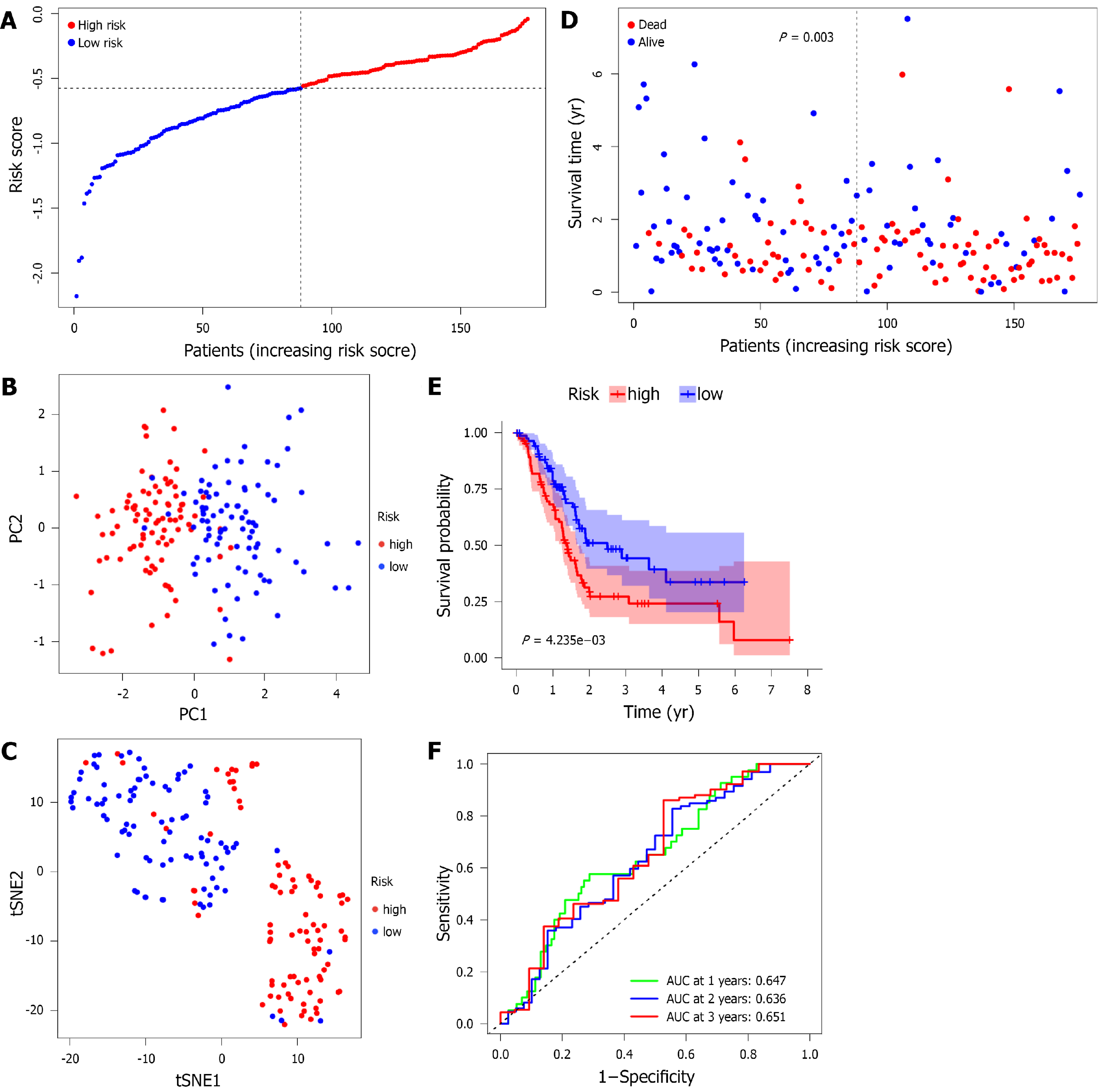Copyright
©The Author(s) 2021.
World J Clin Cases. Dec 16, 2021; 9(35): 10884-10898
Published online Dec 16, 2021. doi: 10.12998/wjcc.v9.i35.10884
Published online Dec 16, 2021. doi: 10.12998/wjcc.v9.i35.10884
Figure 4 Prognostic analysis of 4-gene signature models in The Cancer Genome Atlas.
A: Distribution of risk score values in The Cancer Genome Atlas (TCGA); B: Principal component analysis plot of the pancreatic adenocarcinoma (PAAD) cohort from TCGA; C: t-distributed stochastic neighbor embedding analysis of the PAAD cohort from TCGA; D: Distribution of overall survival status, survival time, and risk scores in the cohort from TCGA; E: The Kaplan-Meier curve presents the overall survival of patients in the high-risk and low-risk groups in the PAAD cohort from TCGA; F: The prognostic performance of the risk score in the PAAD cohort from TCGA was verified by the area under the curve of the time-dependent receiver operating characteristic curve. PC: Principal component; tSNE: t-distributed stochastic neighbor embedding.
- Citation: Xu H, Sun J, Zhou L, Du QC, Zhu HY, Chen Y, Wang XY. Development of a lipid metabolism-related gene model to predict prognosis in patients with pancreatic cancer. World J Clin Cases 2021; 9(35): 10884-10898
- URL: https://www.wjgnet.com/2307-8960/full/v9/i35/10884.htm
- DOI: https://dx.doi.org/10.12998/wjcc.v9.i35.10884









